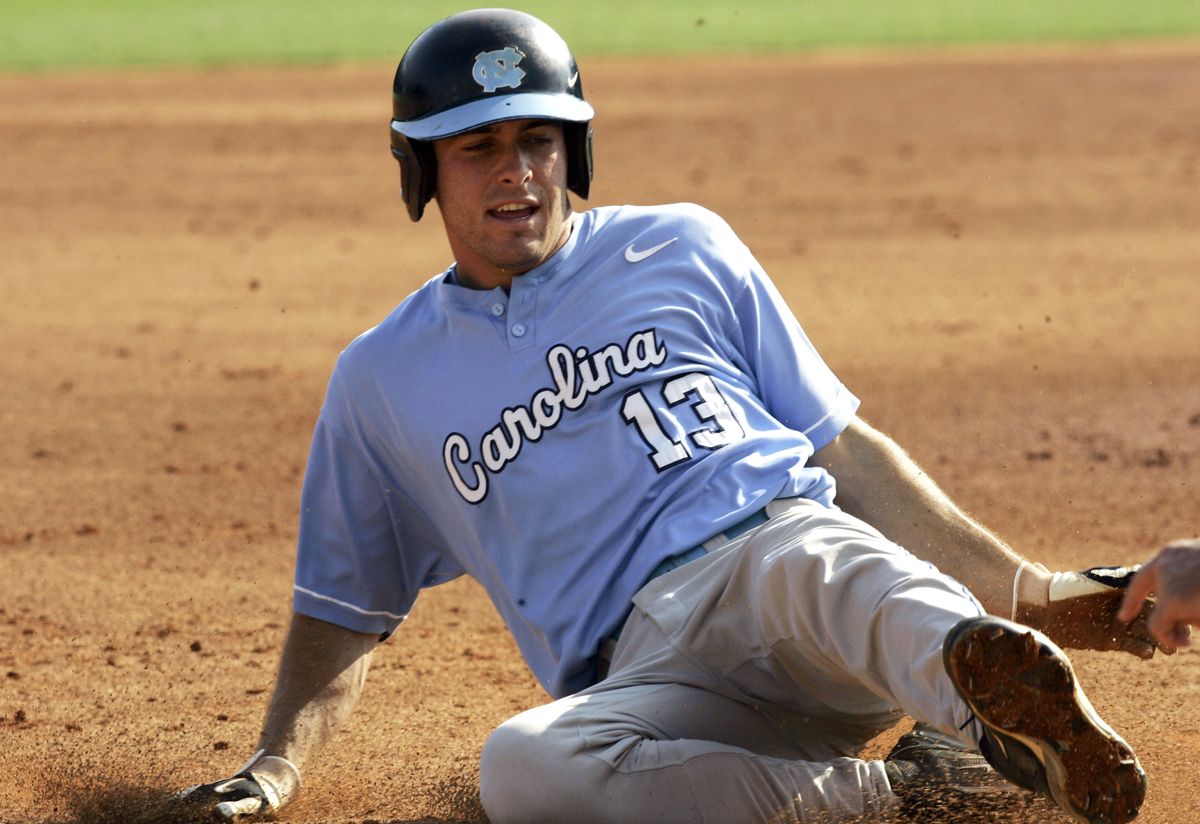Ackley difficult to categorize

Here’s a partial list of left-handed hitters to whom Dustin Ackley, the Great New Mariner Hope, has been compared by various scouts, coaches and analysts:
Johnny Damon. Chase Utley. Darin Erstad. Jacoby Ellsbury. Tony Gwynn. Wade Boggs. George Brett.
“I’ve heard Rod Carew,” said Mike Fox, North Carolina’s coach, who is in Omaha, Neb., this weekend with Ackley and the Tar Heels participating in the College World Series.
“You hear just about every left-handed hitter that uses the whole field, is difficult to strike out and can run.”
OK, add Carew to the list. The Mariners, however, aren’t playing this game, at least not publicly, in the reasonable belief that being likened to a Hall of Famer before even signing a pro contract would put undue pressure on a 21-year-old kid.
Too late for that. With a pick as high as No. 2 overall, fans expect at worst an All-Star performer and at best the savior of the organization.
Any perusal of past drafts shows just how dicey those projections can be. But the Mariners obviously believe that Ackley – whom they call the best hitter in college baseball, with ample justification – will be a core player for them, and not too long from now.
“Every player we see, they’re unique,” said Tom McNamara, the Mariners’ first-year scouting director. “They have their own DNA. You hear, ‘This guy is the next so-and-so.’ We want him to be the first Dustin Ackley.”
And that is, for starters, a guy with a ballplayer’s DNA. Ackley’s father, John, was a third-round pick of the Red Sox in 1979, a catcher who played seven seasons in the minors and got as high as Class AAA Pawtucket.
John Ackley, who had a .243 career average, said of Dustin (in an ESPN The Magazine article): “What separated the two of us was his drive.”
Dustin Ackley was the kind of kid, his dad said, who in high school would lift weights every night and practice his baseball while everyone else was out goofing off.
He avoids fried foods and soft drinks and is described by Fox as “having makeup that’s off the chart.”
Peter Gammons – a North Carolina alumnus, it must be noted – likened Ackley’s ability to “look you in the eye and give off a presence” to Derek Jeter, Joe Mauer, Grady Sizemore and Torii Hunter, among others.
Yes, more of those pesky comparisons.
“We scout beyond tools, performance and statistics,” McNamara said. “I noticed one thing about Dustin – there’s a quiet intensity about him. He appears to be quiet, but his teammates like him. They all interact with him. He’s a good teammate. That’s great.”
Elaborated Fox, the Tar Heels coach, in a phone interview: “Dusty’s quiet, unassuming. He doesn’t like to talk a lot; he doesn’t like people to talk about him.
“But when the game starts, he plays every day, he plays as hard as he can. Other than when he was rehabbing from his Tommy John surgery during the fall, he never missed a game or practice.”
Ah, the Tommy John operation, which is the one red flag that clouds Ackley’s résumé. He underwent the elbow procedure last July, necessitated by an injury he suffered as a pitcher in high school in Walnut Cove, N.C.
No doubt the toughest call the Mariners had to make was whether Ackley’s arm would recover enough to allow him to move to the outfield. As a first baseman, the position he mostly played in college, Ackley’s skill set doesn’t stand out nearly as much as it would as an outfielder.
Fox allowed Ackley to take pregame fielding practice in the outfield throughout the season as a gesture to the scouts that flocked to games. Ackley would also shag balls in the outfield during batting practice.
“I don’t have any doubt he can make that transition,” Fox said. “If he hadn’t come into our program with a bad arm, he’d probably have been our center fielder from Day One, and probably have played it three years.
“There’s not a whole lot on the field he can’t do. I’ve probably used every adjective there is.”
Said McNamara: “No one has a crystal ball, but we think his arm will come back fine. I got to see him in center field enough to say he can do it.”
It is with a bat in his hands, however, that Ackley transports himself to the stature of those Hall of Fame comparisons.
A career .410 hitter who had enough power to blast 22 homers this season, enough patience to draw 50 walks (for a .513 on-base percentage), and enough speed to beat out routine grounders, a la Ichiro Suzuki, Ackley is hard to categorize.
Wrote Baseball America’s John Manuel last month: “Players like Ackley – guys who are truly unique – are the ones that usually become stars.”
This new Mariners regime, led by general manager Jack Zduriencik, has as one of its top priorities the job of restocking the organizational talent pool. As McNamara said, “This is the first piece on the amateur side.”
McNamara likes to say, of the draft, “We’re in the opportunity business.”
In Ackley, they have the opportunity for greatness, which is all you can ask out of a draft. If it works according to plan, future picks will strive to be the next Dustin Ackley.